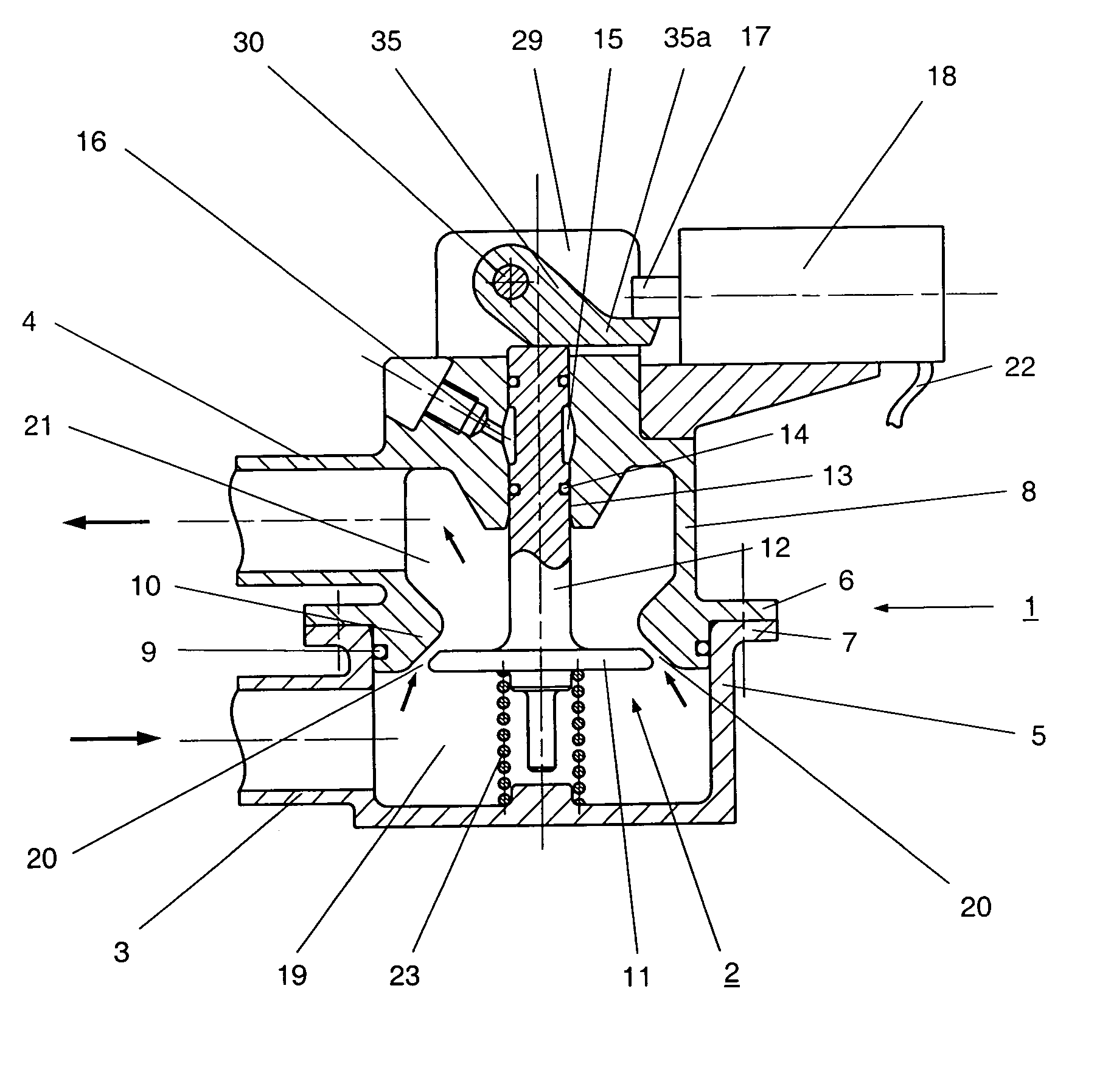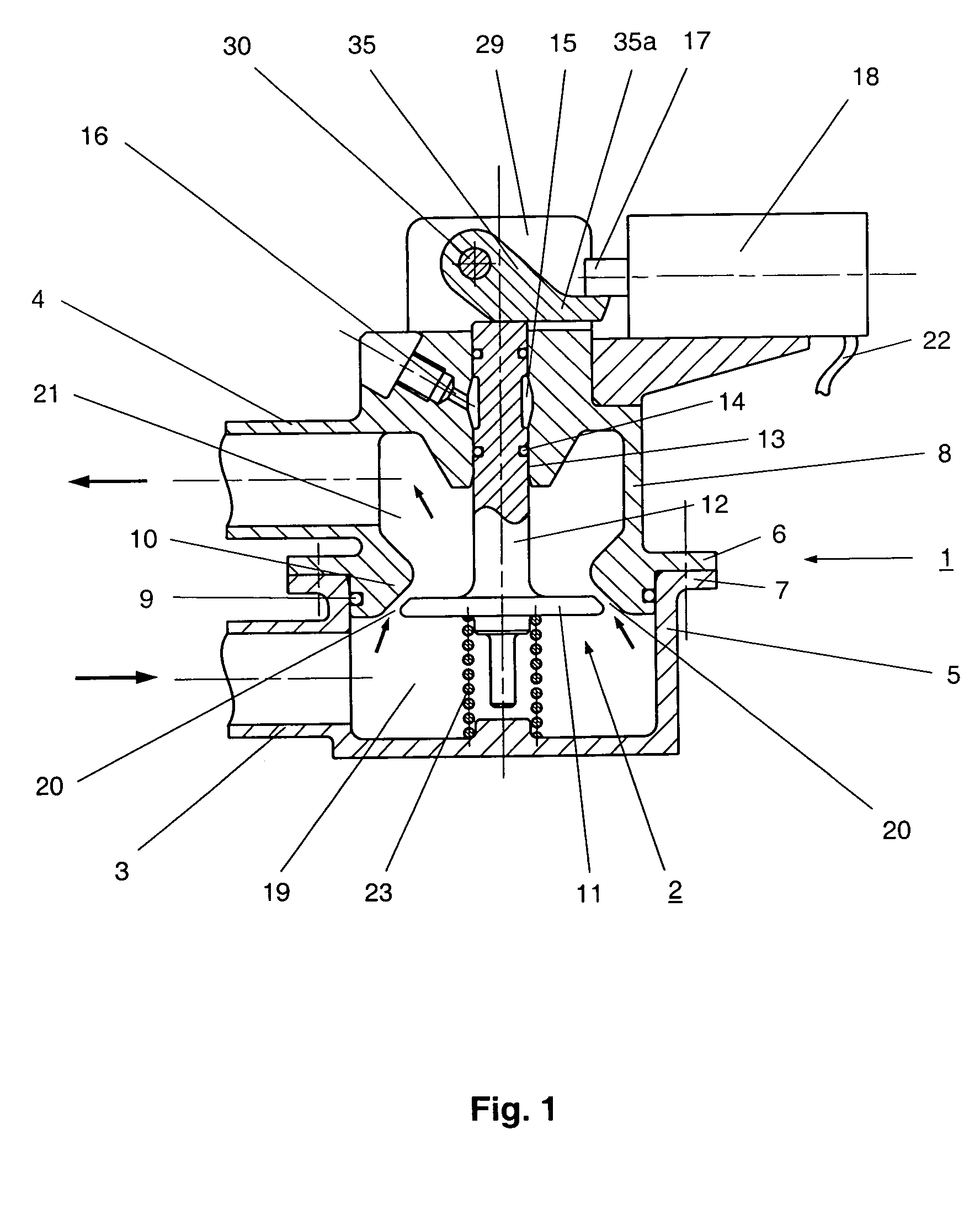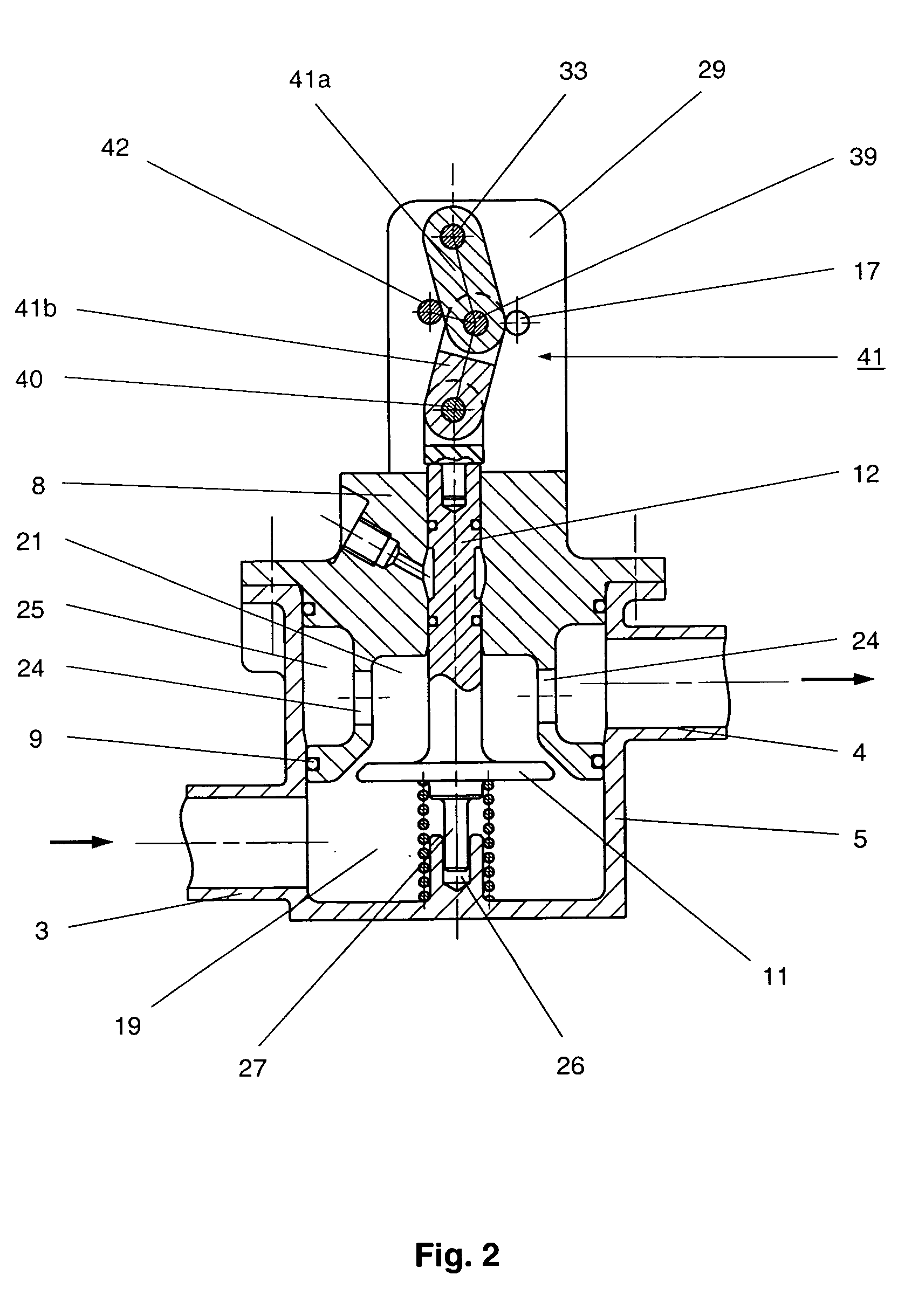Quick-closing valve for the interruption of a fluid flow
a technology of fluid flow and valve, which is applied in the direction of valve details, valve arrangement, operating means/releasing devices, etc., can solve the problems of high cost, short closing time, and additional time, and achieves the effect of shortening the actuation time, facilitating the actuation of the locking element, and reducing the time for the positional change of the locking elemen
- Summary
- Abstract
- Description
- Claims
- Application Information
AI Technical Summary
Benefits of technology
Problems solved by technology
Method used
Image
Examples
Embodiment Construction
[0021]As shown in FIGS. 1 to 3, the quick-closing valve comprises a valve housing 1, a closing element 2 moveably guided in the valve housing 1, and a trigger mechanism to release the closing movement of the closing element 2 to interrupt the further supply of fuel passing through the valve housing 1 to the combustion chamber of an aircraft gas turbine if a shaft failure is detected and indicated by an electrical signal. The two-part valve housing 1 is incorporated in a fuel line (not shown) via a fluid inlet port 3 and a fluid outlet port 4. It includes a housing base 5 and a housing top 8 attached to the base by means of flanges 6, 7 connected by bolts. Housing seals 9 are provided which seal the housing top to the housing base. The portion of the housing top 8 which engages the housing base 5 and forms a valve seat 10 for a valve disk 11 of the closing element 2 whose valve stem 12 is guided in a valve stem guide 13 provided in the housing top 8 and is sealed in the valve stem gu...
PUM
 Login to View More
Login to View More Abstract
Description
Claims
Application Information
 Login to View More
Login to View More - R&D
- Intellectual Property
- Life Sciences
- Materials
- Tech Scout
- Unparalleled Data Quality
- Higher Quality Content
- 60% Fewer Hallucinations
Browse by: Latest US Patents, China's latest patents, Technical Efficacy Thesaurus, Application Domain, Technology Topic, Popular Technical Reports.
© 2025 PatSnap. All rights reserved.Legal|Privacy policy|Modern Slavery Act Transparency Statement|Sitemap|About US| Contact US: help@patsnap.com



